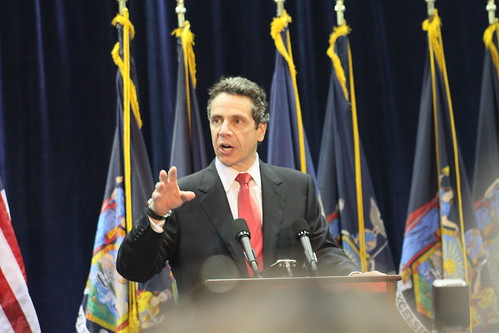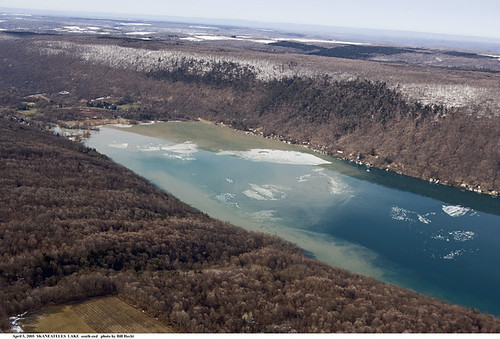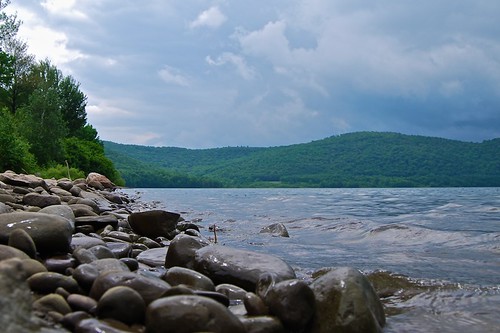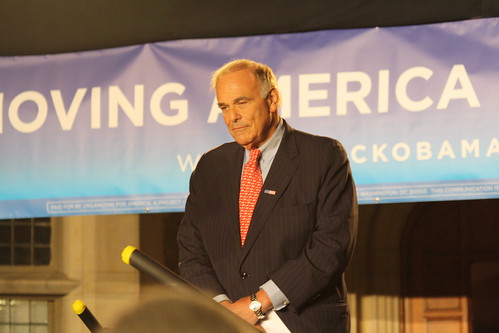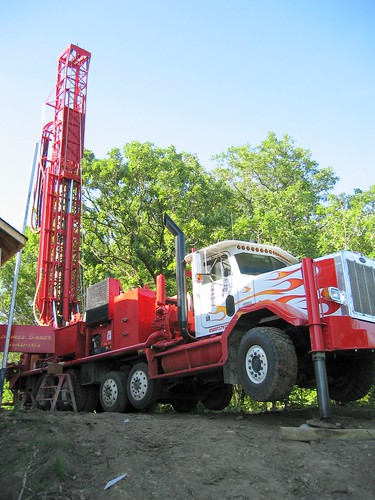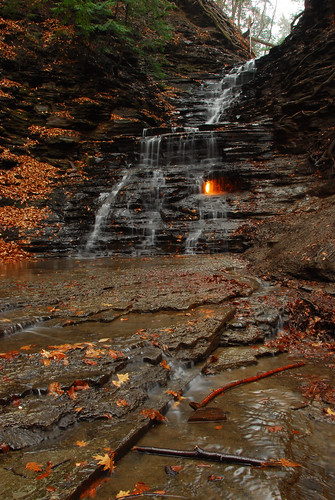Albany denizen, computer guy, outdoors enthusiast, and Twitter user Andy Arthur (@AndyArthur) was recently mapping some data from the NYS Department of Environmental Conservation, when he hit upon an interesting question:
Where within the former Empire State have water well drillers been finding unwelcome methane in wells they've drilled for homeowners?
I believe such a dataset, and such a map, would be a very important to organize — prior to the introduction of modern horizontal drilling and hydraulic fracturing to produce shale gas in New York State.
And, it turns out, there is actually an already-existing collection point for this information.
Since January 2000, shortly after the state law governing professional water well drillers was amended, the DEC has on a statewide basis collected so-called water well completion reports from these contractors. The DEC's program is explained to the general public here. And the records of certified well drillers, as well as the wells they've drilled so far (not counting Long Island), can be combed online here. According to DEC reps, the database at this writing holds 85,367 records.
The instructions to certified well drillers for filling out the forms include Section 43, the Well Log. For every well, in this place on the form, there is room for reporting — in a computer-unfriendly, freehand sort of way — information about issues encountered, such as sulphur, salt, or methane. 
Methane — now that's a big issue, currently.
The only trouble is, the drillers' responses in this section aren't ever linked or entered into the database. And so these reports sit unsorted and unsortable, on either the original paper or an archived scan. One would have to line up an intern or two to go through the whole stack of 85,000 in order to determine how often well drillers in New York hit methane (and go to the trouble of reporting that fact), and also to get a picture of where methane-in-water might tend to be happening geographically within the state.
Grant-worthy project, anyone? Senior thesis, anyone? Master's project, anyone?
Methane in water is a centuries-old, naturally occurring phenomenon — non-toxic if simply consumed, but potentially an explosion hazard if allowed to collect unvented within living spaces. Due to the current political slugfest over hydraulic fracturing to develop shale gas, I think it would be fair to say that the oil and gas industry has recently become popularly blameworthy, at least in the Northeastern U.S., for nearly every conceivable occurrence of methane in water.
To be honest and fair, I'm willing to acknowledge that industry and the regulatory establishment are, in fact, guilty of allowing insufficient casing to cause some water wells to become polluted with methane, either in the short-term or the long-term. In these cases, the culprit has been drilling, not fracking. And the culprit has also been shallow methane riding up the outside of the unsealed, external, concrete layer of the casing, not deep production methane escaping from inside the internal, solid-steel, drill-pipe layer.
But — let's face it — to the affected homeowners, and to anti-drilling activists, or to the journalistic community, such fussy factual distinctions are completely irrelevant, and have no impact whatsoever upon the generalized and slurred story line, which basically runs to the effect that the goddamn gas drillers must be obviously routinely fracking up everybody's water with their methane.
Relevance is the key word.
And relevance, like beauty, appears to be in the eye of the beholder.
Is it relevant that many rural homeowners have long coped with methane in their water wells — but without ever having any culprit to blame, get mad at, or sue, except simply the unthinking malevolent forces of nature? Is it relevant that some once-good water wells do suddenly go bad, without any particular human cause?
I think it is relevant.
Josh Fox does not think so.
In a video currently censored from You Tube and Vimeo — blacked out for the moment on very thin, copyright-infringement grounds by lawyers working for Fox — Irish instigator
Phelim McAleer shot some clandestine, two-camera tape of his confrontation of the director of
Gasland at a Q&A session in Chicago. (
The video in its originally suppressed form recently resurfaced on a renegade web site, and can for the time-being be viewed here.) Fox is shown to dance and deflect when publicly challenged for having left out seemingly key, freely available information — conclusions from experts indicating that the now-famous scenes of flaming faucets which so graphically anchor the premise of his entire film have to do with natural causes.
It's not relevant, according to Fox.
Previously known, pre-fracking methane-in-water issues in these areas of Colorado are not relevant. The water well completion reports (and — for one of these wells — these obscure technical documents show the water well bore was punched directly through a number of layers of shallow, methane-rich coalbed) are not relevant. The assessment of Colorado's publicly employed experts is not relevant. These things are no more relevant than the statistics on traffic accidents from Denver, Fox says.
All you need, according to Fox, is a citizen's emotional testimony that before fracking their water seemed fine, and after fracking, all hell broke loose. That's the smoking gun. Everything else is irrelevant.
What is this about?
To me, this is about the exact spot in the movie where politics, persuasion, and naked manipulation come unhinged from the science, from honest reporting, and from what's actually knowable about the world.
In New York State — where, despite three years of patience by industry, and by the actual resource owners, there has still not yet been permitted the first full-on, full-frack, horizontal shale gas well — there are a number of homeowners who have already gone public with the fact that they have methane in their water.
Here's a sampling:
Ithaca anti-drilling activist
Walter Hang lined up
Frederick Mayer of Candor, NY, to appear on a You Tube video here — with more than 50,000 views as of this writing. Mayer as a disabled Vietnam vet is clearly a sympathy-inducing character, and the video — amateurish though it may be in its execution — is clearly set up so as to make us viewers feel sorry for the guy. Here he is, diligently maintaining this rental property for years, and — as of about three years before filming — he now suddenly faces a shortage of prospective tenants, due to the fact that his tap water has turned gassy and flammable. Mayer blames gas drilling, but the details of timing and proximity are left suspiciously fuzzy, and the NYS DEC people didn't see enough of a connection to even bother sending somebody in person to check it out.
Nowhere within the video's two and a half minutes is there any specific reporting as to the proximity of the closest natural gas well — whether that question is framed historically or recently. We only hear that they were drilling in Spencer, "which is due west of here." (For the record, and for what it's worth, my NYS atlas shows "downtown" Spencer is more than 8 miles due west from "downtown" Candor.) This is the level of detail we get from Hang — who ranks professionally as a computer database expert where his primary business function consists of supplying the banking, legal, and consulting industries with geographically delineated government data on every available piece of environmentally relevant information. Hang doesn't even bother to let us know which gas well could have possibly caused the problem, and what would have been the chronological sequence of supposedly causal events. And, again, remember, it can't be fracking, and it can't be shale gas, because New York hasn't yet allowed any drilling to be followed by high-volume hydraulic fracture. (Unless Hang wants to take the position that Mayer's trouble is coming north, deep underground, from PA — the state line for which my map book tells me is more than 17 miles south of Candor.)
The case of Fred Mayer's flaming kitchen tap was curious enough to interest the
Syracuse Post-Standard — even though Candor is 67 miles away by car, and well outside the paper's ordinary circulation or coverage area. I remember it running as a kind of ominous warning about the dangers of natural gas drilling
on the front page, complete with alarming photo, on Jan. 2, 2010 (though they don't seem to keep track of print placement in the online versions).
Documentarians
Getzels Gordon Productions found
John Larnerd of Owego, NY — one of the Southern Tier's classic retired IBMers — who lit his well water vent on fire for posterity as shown here in a slide-show-with-voiceover on Shale Country. (Shale Country appears to have been a folksy, industry-funded, once-only attempt to reply to
Gasland.) Larnerd is well-schooled in energy and environmental issues — and even dabbles in producing some solar energy himself — but he very calmly shows he's not freaked out, or ready to mount a political crusade, about the methane in his water. There's no way to say how many people, by comparison, have seen this interview, but I think it would be fair to say that it's way less than the 50,000 YouTubers getting their blood pressure jacked up looking at Hang's output. To my knowledge, local media have taken absolutely no notice of it at all.
Then there was also a case quite a bit further east in Guilford Center, NY [sorry, I can't find a link to any version of the original story which isn't half-withheld behind a subscribers-only doorway] — first publicized by the
Norwich Evening Sun, possibly the only upstate newspaper to so far take an editorially embracing view of the prospect natural gas might pose for this region.
(I see that this Guilford Center story has also now been picked up here by the northeastern branch office of Energy In Depth,) Robert Sandell, a 74-year-old homeowner in that hamlet — situate on the eastern fringes of Chenango County, within the Unadilla River watershed, a feeder to the Susquehanna — showed reporters pictures and video of himself lighting his kitchen tap on fire.
What's most interesting to me about this (other than the question of how the hell Sandell ever expects to sell his house in such a small town, now that he's given this very public performance) is the fact that the guy's homestead is so far east within upstate New York's wildcat zone for natural gas development. Both the Norwich paper and EID-Northeast err conveniently in quoting the Chenango County Planning Department to the effect that the closest gas drilling would have been in Coventry, 25 miles away. ("Downtown" Coventry is about 11 miles by direct route from "downtown" Guilford Center.) Much better information can be teased out through
state DEC mapping applications freely available online here, where any searcher can reliably show there has been only one oil or gas well ever drilled within Guilford Township, during the entire era of state regulation over this activity. That would have been the now-plugged Robert C. Wahlberg #1, a 5,500-foot-deep near-basement test spudded by Amoco in 1974 about two miles away from "downtown" Guilford Center.
One last notable case of presumably naturally flowing methane in water involves not a water well — but a waterfall. Proud Buffalonians — always alert for more local lore with which to wow people from out of town — know it as
Eternal Flame Falls, within the Shale Creek Preserve section of Chestnut Ridge Park, in Orchard Park, NY. There is at least one spot there, on the shaley staircase, where the nooks and crannies are so arranged that somebody discovered you could keep the continuously venting methane on fire for weeks after lighting. Hundreds of hours of freelance story-telling, writing, hiking, photography, and Bic-flicking have been devoted ever since to keeping this waterfall's fame and flame alive. (
Some great pics and text from a SUNY UB grad student in geology here.)
But, for the most part, Eternal Flame Falls has had absolutely no influence on the debate over hydraulic fracturing for shale gas in New York.
It must be it's just not relevant.


